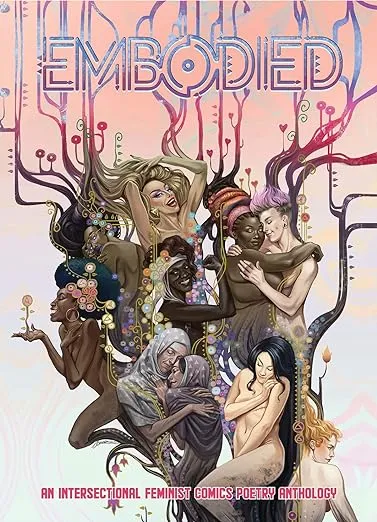
What Are Poetry Comics?
Poetry comics — some prefer the terms comics poetry or graphic poetry — are a form of mixed-media expression that combines words with images. Some creators provide both the poetry and the pictures, while others draw pictures to go along with someone else’s poetry.
But what exactly are poetry comics? What is their purpose, and why do they work (or don’t)? Depends on who you ask.
In Poetry Magazine, poet Gabrielle Bates discusses why poetry comics mean so much to her as a creator: they “are a collaborative art, whether there is another person involved or not.” In other words, they force both creator and reader to dig deeper into the material than an image or a poem alone would be able to manage.
Poetry comics are, as poet and Poem Forest founder Tamryn Bennett explains, neither poetry nor comics: they are a hybrid form that cannot be separated out into component parts. They are designed to turn your traditional linear narrative on its head. Looking at examples featured in all of the articles linked here, you can see that the art leaves it up to the reader to figure out where to look first and in what order to read the text or look at the images. There isn’t a right or wrong answer to these questions as there is with a traditional comic, where you have to read the panels in order, or a poem, which leads you through line by line. While all art calls on the reader to imbue it with meaning, this is especially true with poetry comics.
“It is a form (genre? subgenre? happening? mode?) where meaning is found in integration by dwelling in the between,” as Bates put it.
Of course, we wouldn’t want to paint such a broad and experimental medium with too narrow a brush. The second page of Bennett’s article (it may take a while to load, so be patient) features an intriguing piece called “The Six Treasures of the Spiral: A Comics Sestina” by Matt Madden that you do, in fact, have to read in order. It instead uses other devices, like repeating dialogue, to force readers to think harder about what they are seeing.
Meanwhile, poet and visual artist Bianca Stone straight-up says she has no idea what comics poetry is.
“I don’t know what they are, or why they matter or how long I will stand them,” she stated in an article in Plume Poetry. Later in the same article, she added, “For a poetry comic to be successful, it must convey an uncertainty that stirs something both intelligible and unknown in the reader/viewer, that is, that’s inherently ironic in its perplexing but also entertaining ability to wed mystery with meaning in its art and text.”
In short, poetry comics represent different things to different creators.
There are a lot fewer rules for poetry comics than there are for other media. This, ironically, can make it more difficult for creators to make and for readers to understand: how do you interpret a work that throws even the most basic tenets of sequential art out the window (or even argues that there never was a window in the first place)?
For some, that question is too much to deal with. For others, it’s a freeing new way to express old ideas.
Where to Start With Comics Poetry
As a relatively new medium, you won’t find the type of massive backlog that you do with more established art forms, and many of the books mentioned in the articles I linked are currently out of print. Still, there are some good collections out there that let you see what poetry comics have to offer.
For instance, if Bianca Stone’s thoughts have intrigued you, Poetry Comics from the Book of Hours is a collection of her work. Embodied: An Intersectional Feminist Comics Poetry Anthology and Ink Brick: The Journal of Comics Poetry are both anthologies featuring work from many different creators if you want to get a feel for how different people approach the medium. For a general overview of the topic, you might try Over the Line: An Introduction to Poetry Comics.
Given the deliberately abstract nature of poetry comics, it doesn’t matter where you start. The fact that you start at all is what matters.
Granted, comics poetry is not for everyone. Stone herself says that “I kind of hate poetry comics” and that the medium “will always be, in some way, unloved and feared, just as poetry is.” Still, it’s good to know what they are, even if I’m not sure I’ve adequately answered the grand question of “what are poetry comics.” It seems like everybody has their own answers. So, the best way to find out for yourself what poetry comics are is to read them and develop your own opinion.










